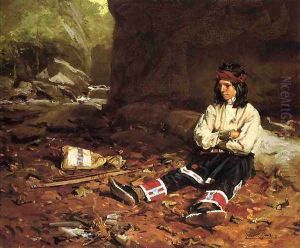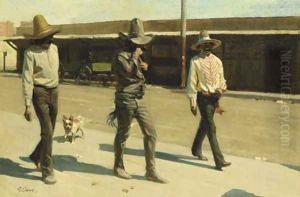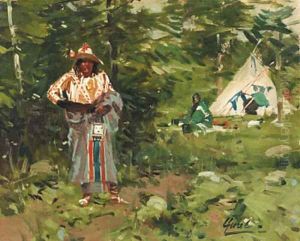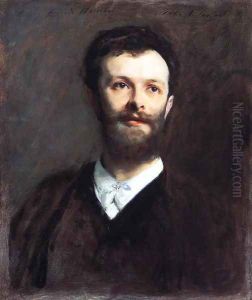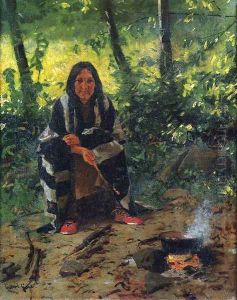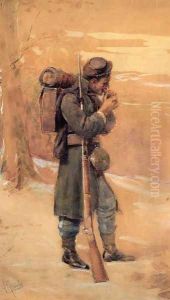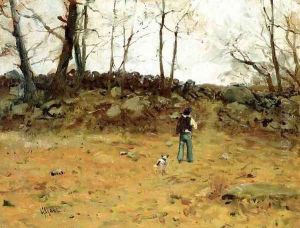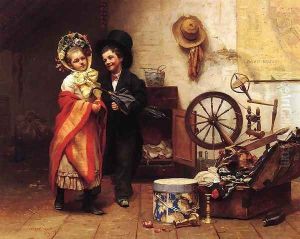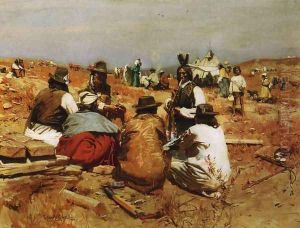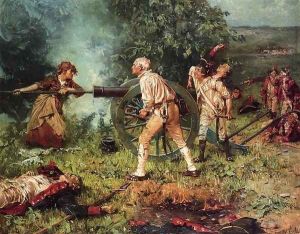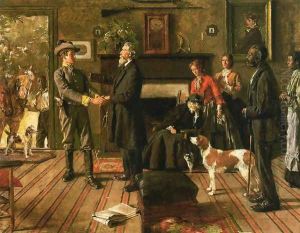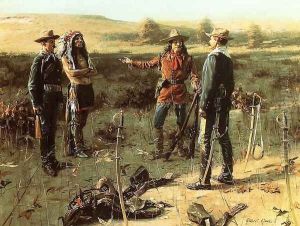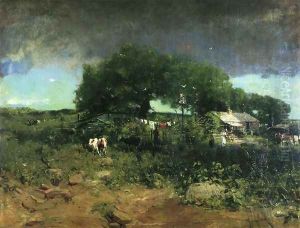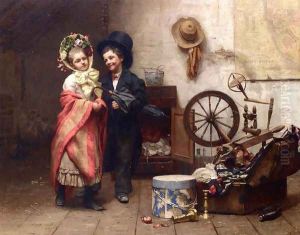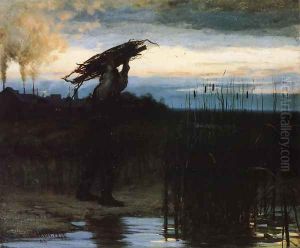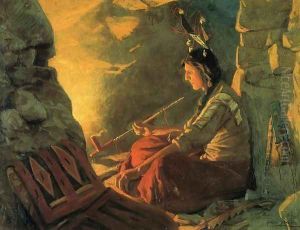William Gilbert Gaul Paintings
William Gilbert Gaul, born on March 31, 1855, in Jersey City, New Jersey, was an influential American artist known for his paintings that depicted scenes from the American Civil War and the American West. Gaul demonstrated artistic talent at an early age, and he pursued his passion by studying at the National Academy of Design in New York and later under Jean-Léon Gérôme in Paris.
After his training in Europe, Gaul returned to the United States and began to establish himself as a prominent painter of historical themes and genre scenes. His works often featured dramatic moments and detailed depictions of soldiers and frontier life. Gaul was particularly fascinated with the Civil War, which had concluded just a decade before his birth, and he sought to capture the conflict's intensity and the soldiers' experiences.
Gaul's notable works include 'Charging the Battery' and 'Holding the Line at All Hazards,' which earned him critical acclaim and a reputation as a skilled painter of military subjects. He was also an illustrator for various publications, contributing to the popular imagery of the American frontier and the Civil War era.
In addition to his paintings, Gaul was active in the art community. He was a member of the Society of American Artists and served as vice-president of the National Academy of Design. His influence extended to younger artists, whom he mentored throughout his career.
Gaul's works are part of several major museum collections, including the Metropolitan Museum of Art in New York and the Smithsonian American Art Museum in Washington, D.C. He passed away on December 23, 1919, but his legacy endures through his contributions to American art, particularly his portrayals of the nation's history and the expansion of the American West.
